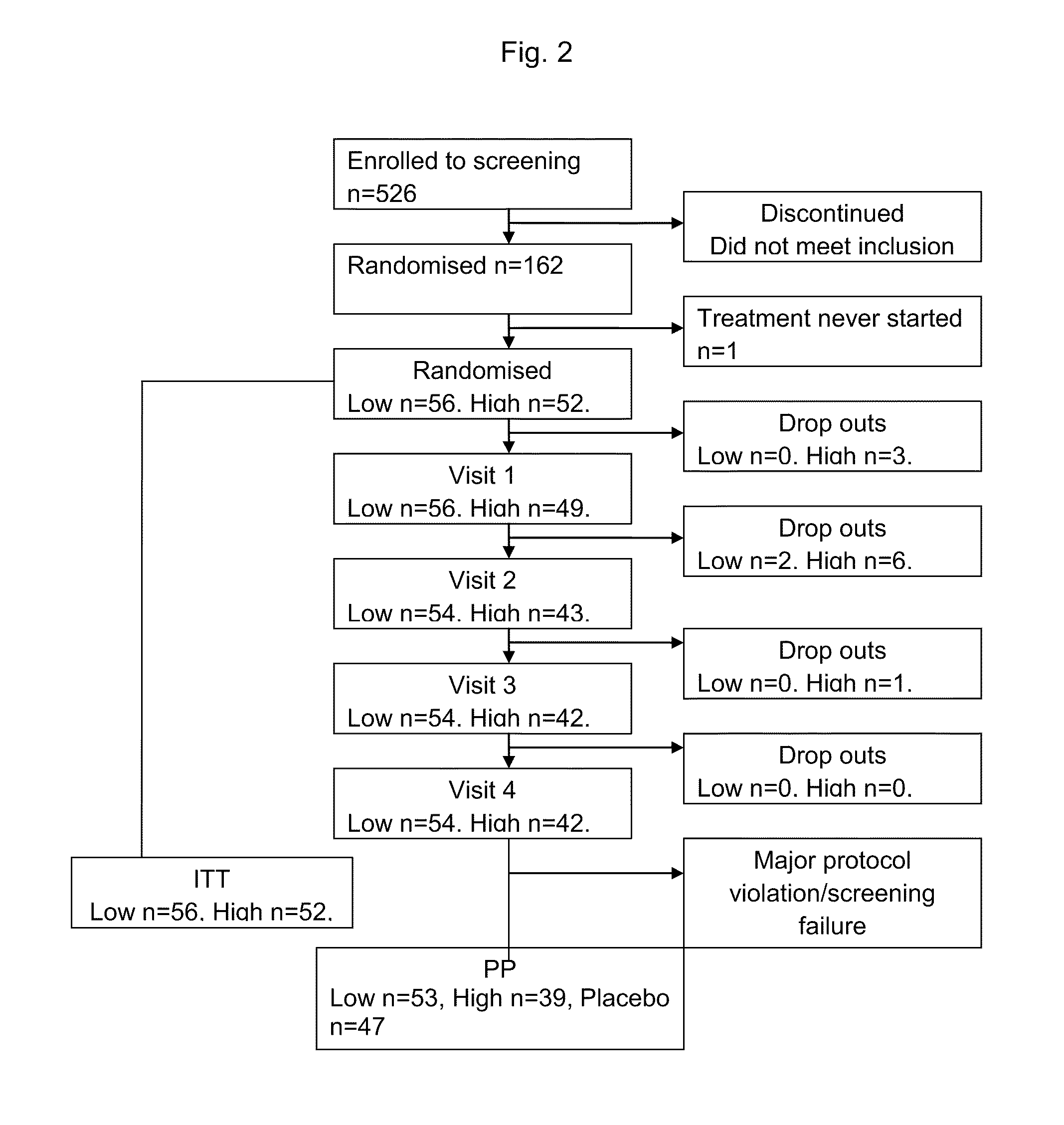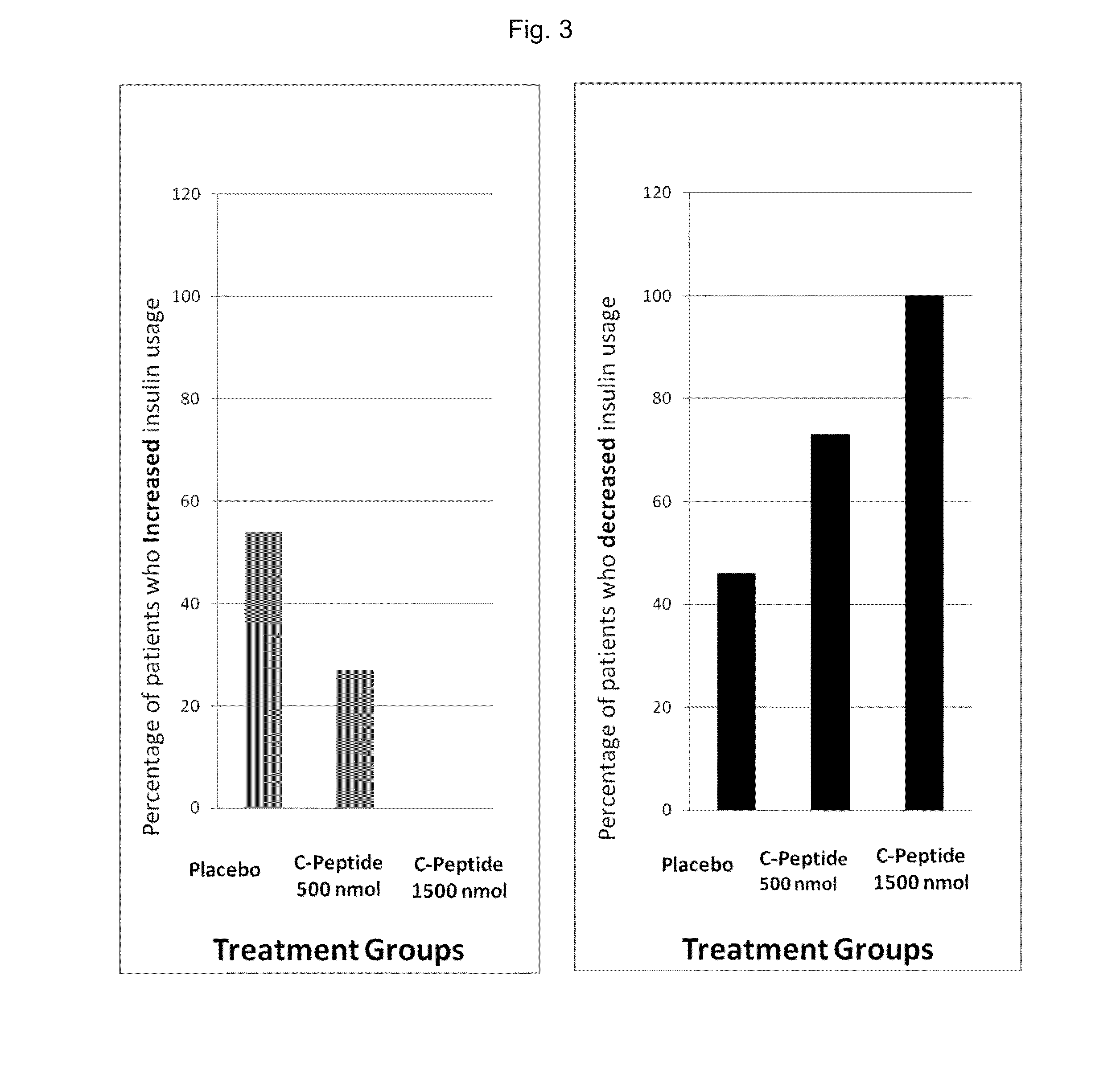Methods and kits for preventing hypoglycemia
a technology of kits and hypoglycemia, applied in the field of kits for preventing hypoglycemia, can solve the problems of no causal treatment for preventing long-term complications in patients, morbidity and mortality, blindness and visual dysfunction in developed countries, etc., and achieve the effect of reducing the risk, incidence or severity of hypoglycemia
- Summary
- Abstract
- Description
- Claims
- Application Information
AI Technical Summary
Benefits of technology
Problems solved by technology
Method used
Image
Examples
example 1
Demonstration of Altered Insulin Requirements During C-Peptide Therapy
I Overall Study Design
[0300]The study was a multicenter, double-blind, randomized, placebo-controlled phase II trial comparing the effect of subcutaneous injection (S.C.) of 500 nmoL / 24 h (1.5 mg) C-peptide; 1,500 nmoL / 24 h (4.5 mg) C-peptide and placebo treatment for 6 months in type 1 diabetes patients with peripheral neuropathy.
[0301]Five clinical centers participated in this study and patients were recruited to the study by advertisement and by screening of hospital records. Patients who were found eligible and who declared a willingness to participate, were invited to participate in the study and were subsequently screened for inclusion and exclusion criteria.
[0302]At the initial screening / baseline visit (S / B visit) the patients were assigned a screening number (starting with site number 1001). Written informed consent was obtained. Demographic data, medical history, concomitant medication including insulin r...
PUM
| Property | Measurement | Unit |
|---|---|---|
| concentration | aaaaa | aaaaa |
| concentration | aaaaa | aaaaa |
| concentration | aaaaa | aaaaa |
Abstract
Description
Claims
Application Information
 Login to View More
Login to View More - R&D
- Intellectual Property
- Life Sciences
- Materials
- Tech Scout
- Unparalleled Data Quality
- Higher Quality Content
- 60% Fewer Hallucinations
Browse by: Latest US Patents, China's latest patents, Technical Efficacy Thesaurus, Application Domain, Technology Topic, Popular Technical Reports.
© 2025 PatSnap. All rights reserved.Legal|Privacy policy|Modern Slavery Act Transparency Statement|Sitemap|About US| Contact US: help@patsnap.com



